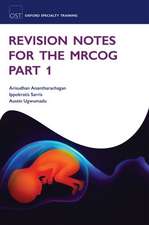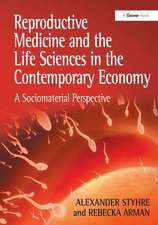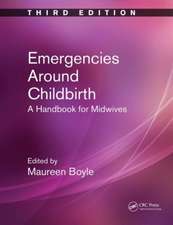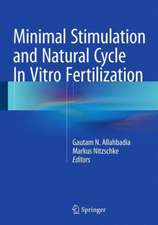Human Embryo Transfer
Editat de Gautam N. Allahbadia, Claudio F. Chilliken Limba Engleză Paperback – 23 oct 2016
| Toate formatele și edițiile | Preț | Express |
|---|---|---|
| Paperback (1) | 325.38 lei 38-44 zile | |
| Springer India – 23 oct 2016 | 325.38 lei 38-44 zile | |
| Hardback (1) | 370.58 lei 3-5 săpt. | |
| Springer India – 10 aug 2015 | 370.58 lei 3-5 săpt. |
Preț: 325.38 lei
Preț vechi: 342.51 lei
-5% Nou
Puncte Express: 488
Preț estimativ în valută:
62.27€ • 64.64$ • 51.92£
62.27€ • 64.64$ • 51.92£
Carte tipărită la comandă
Livrare economică 18-24 martie
Preluare comenzi: 021 569.72.76
Specificații
ISBN-13: 9788132228660
ISBN-10: 8132228669
Pagini: 96
Ilustrații: XIV, 96 p. 12 illus., 7 illus. in color.
Dimensiuni: 178 x 254 mm
Ediția:Softcover reprint of the original 1st ed. 2015
Editura: Springer India
Colecția Springer
Locul publicării:New Delhi, India
ISBN-10: 8132228669
Pagini: 96
Ilustrații: XIV, 96 p. 12 illus., 7 illus. in color.
Dimensiuni: 178 x 254 mm
Ediția:Softcover reprint of the original 1st ed. 2015
Editura: Springer India
Colecția Springer
Locul publicării:New Delhi, India
Cuprins
Evaluation of the uterus prior to embryo transfer.-Trial Embryo Transfer (Mock Transfer).- Does the Experience of the Provider Affect Pregnancy Rates After Embryo Transfer?.- Ultrasound-Guided ETs or Clinical Touch ETs? .- Variables That Affect a Successful Embryo Transfer.- Management of Difficult Embryo Transfers.- Facts and Myths of Embryo Transfer .-Uterine Contractility and Embryo Transfer.- Embryo Transfer Media and Catheters.- Is There A Role for Tubal Transfers? .- Loading and Expulsion of Embryos
Recenzii
Notă biografică
Dr. Gautam N Allahbadia, MD is the Medical Director of Rotunda -The Center for Human Reproduction, the world-renowned infertility clinic at Bandra, and Rotunda-Blue Fertility Clinic and Keyhole Surgery Center, Mumbai, India. He cherishes over 125 peer-reviewed publications, 134 book chapters and 22 textbooks, the latest being a comprehensive text, entitled "Minimal Stimulation IVF", and is on the Editorial Board of several International Journals. He just completed a two year tenure as Medical Director at the New Hope IVF Clinic, Sharjah, UAE where he introduced IVF Lite to the country. Dr. Allahbadia has recently been elected as the Vice President of the World Association of Reproductive Medicine (WARM), headquartered in Rome, and “Mumbai’s Top Doc” for 2012 by a peer nomination process.
Textul de pe ultima copertă
This concise work on embryo transfer is yet another contribution to the persevering effort to disseminate latest information on the science and skill of performing a traumatic and successful embryo transfer. It is the most critical culmination of the assisted reproductive technology (ART) stimulation cycle, and a rate-limiting step in dictating the success of treatment. The well-worded chapters draw the reader’s attention to significant aspects before initiating the actual embryo transfer, such as possible causes of failure at the embryo transfer stage, uterine evaluation, mock embryo transfer (ET), experience of the physician, and the use of ultrasound-guidance to monitor ET. The protocol for difficult transfers, variables that affect the success of ET, and the influence of the catheter used for ET have also been dealt with. The unique feature of this book is its pragmatic approach that can translate into solutions to the numerous frustrating ART failures that more often thannot, may be attributed to an inefficient ET procedure. It helps the reader understand the integrity of embryo transfer, unravel its obvious simplicity and bridge the success between the several steps of ART. By highlighting the impeding problems associated with ET procedure and providing valid, scientific solutions, this stimulating edition will help the readers improve the ART success rates in their clinical practice.
Caracteristici
Covers important topics like possible causes of failure at the embryo transfer stage Highlights problems associated with ET procedure and provides valid, scientific solutions Explains the obvious simplicity of ET and how clinicians can improve their success rates in ART ?
















